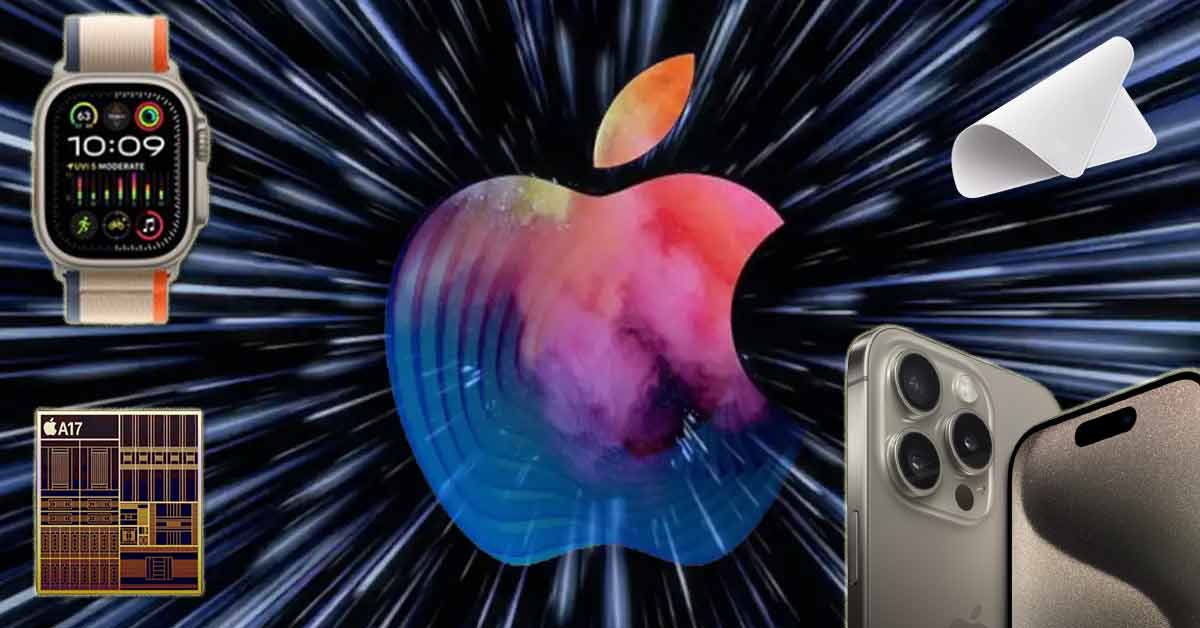Apple recently released the iPhone 15, and there are already talks and rumors about the iPhone 16Pro and 16Prov Max. This is mainly because Apple's next-generation iPhone 16 Pro and iPhone 16 Pro Max promise to include Qualcomm's latest cellular modem.
Qualcomm's Snapdragon X75 modem is rumored to be in the iPhone 16 Pro and iPhone 16 Pro Max, a departure from the standard Snapdragon X70 modem used in the iPhone 15 and iPhone 15 Plus.
Traditionally, Apple uses the same Qualcomm modem across all models for each generation, except for the low-end iPhone SE, so this is a change.

Qualcomm's Snapdragon X75 & 5G Advanced
Announced in February 2023, the Snapdragon X75 introduces remarkable enhancements in 5G technology. It boasts improved carrier aggregation and other advancements that significantly boost 5G download and upload speeds compared to its predecessor, the X70.

One standout feature is the modem's combined mmWave and sub-6GHz 5G transceiver, occupying 25% less circuit board space and consuming up to 20% less power. Snapdragon X75 is its support for the "5G Advanced" standard as well.
Snapdragon X75 Features
- Qualcomm® 5G AI Suite Gen 2 includes
- Sensor modem RF solution for mmWave beam management
- AI-enhanced channel state feedback (CSF)
- AI-enhanced antenna tuning
- AI-enhanced GNSS Location Gen 2
- Qualcomm® 5G AI Processor Gen 2 with dedicated tensor accelerator
- Converged mmWave-sub6 Transceiver
- 3GPP Release 17 and Release 18 support
- Qualcomm® QTM565 mmWave module
- Qualcomm® Advanced Modem-RF Software Suite includes
- Qualcomm® Smart Network Selection Gen 2
- Qualcomm® DSDA Gen 2 (Dual Data)
- Advanced Interference Cancelation
- Qualcomm® 5G PowerSave Gen 4
- Qualcomm® Smart Transmit™ Gen 4 technology with Snapdragon® Satellite support
- Qualcomm® Power RF Efficiency Suite
- Qualcomm® RF Downlink Boost
Apple's Modem Aspirations
Apple usually uses a forward-looking approach to market their phones, so tech enthusiasts expect they will hype the new modem with iPhone 16 Pro models featuring "5G Advanced,". They used a similar marketing method when introducing "LTE Advanced" with iPhone 6s in 2015.
Rumors have long circulated about Apple's desire to develop its 5G modem for iPhones. This project began in 2018 but has faced its share of development challenges.
There has yet to be a concrete announcement regarding when or if Apple's modem will become a reality, with speculation suggesting a release in 2025 or later. In the meantime, Apple has extended its 5G modem agreement with Qualcomm through 2026.
Apple enthusiasts and tech fans expect Apple will announce the new iPhone 16 lineup in September 2024. Qualcomm's Snapdragon X75 5G modem-RF system might change the industry, but we must wait for it.

This innovative technology, designed to enhance phone connectivity, will be available in devices in the second half of 2023. It's an upgrade from the X70, which has already found its way into powerful phones like the Samsung Galaxy S23 Ultra and OnePlus 11 5G.
Snapdragon X75 Specifications
Cellular Modem-RF
Modem Name: Snapdragon® X75 5G Modem-RF System
Peak Download Speed: 10 Gbps
Peak Upload Speed: 3.5 Gbps
Cellular Modem-RF Specs: 10CC aggregation in mmWave, 5CC aggregation in 5G sub 6GHz
Performance Enhancement Technologies: Qualcomm® Smart Transmit™ Gen 4 technology, Qualcomm® 5G AI Processor Gen 2 with dedicated tensor accelerator, Qualcomm® 5G AI Suite Gen2, Qualcomm® Advanced Modem-RF Software Suite, Qualcomm® 5G PowerSave Gen 4, Qualcomm® Power RF Efficiency Suite, Qualcomm® RF Downlink Boost
Cellular Technology: 5G NR, sub-6 GHz, Dynamic Spectrum Sharing (DSS), LTE, WCDMA, LAA, TD-SCDMA, GSM/EDGE, CBRS, mmWave, 5G FDD, 5G TDD, 5G SA (standalone), 5G NSA (non-standalone), F + F ULCA, FDD UL MIMO, Switched Uplink.
Multi SIM: Dual SIM support Qualcomm® DSDA Gen 2 (Dual Data)
Unlocking the Potential of 5G: Faster and More Efficient
The Snapdragon X75 doesn't stop at mere connectivity; it's prepared for 3GPP's release 17 and 18, which are instrumental in defining the standards for the next phases of 5G technology.
Release 18 marks the start of a phase known as 5G Advanced, where we can expect 5G to extend its reach to diverse applications, such as connected cars and smart cities.
Qualcomm has reimagined the architecture of the X75, introducing a combined mmWave and sub-6GHz 5G transceiver. This remarkable redesign occupies significantly less circuit board space while being incredibly efficient by using 20% less power.

Furthermore, it supports 5G carrier aggregation for faster data transfer, with the new chip backing five-carrier sub-6GHz aggregation and a massive ten-carrier mmWave aggregation.
The X75 takes things up a notch with its support for 5G uplink MIMO (multiple-input multiple-output) and the ability to send two signals simultaneously using Frequency Division Duplex (FDD). This spectrum technology streamlines data transfer.
The X75's upgraded software suite ensures your phone maintains a strong connection in challenging environments, whether it's an elevator, parking garage, or subway train.

By using context to determine the best cell to connect to, this technology ensures you're always in touch. Additionally, a second-gen AI accelerator further enhances location accuracy in demanding settings, such as dense urban canyons, where conventional signals may falter.
Qualcomm has indicated that the X75 is currently undergoing testing and is expected to be integrated into various Android devices in the latter half of 2023. Will X75 come to Apple as well? We will need to wait for a short while.













